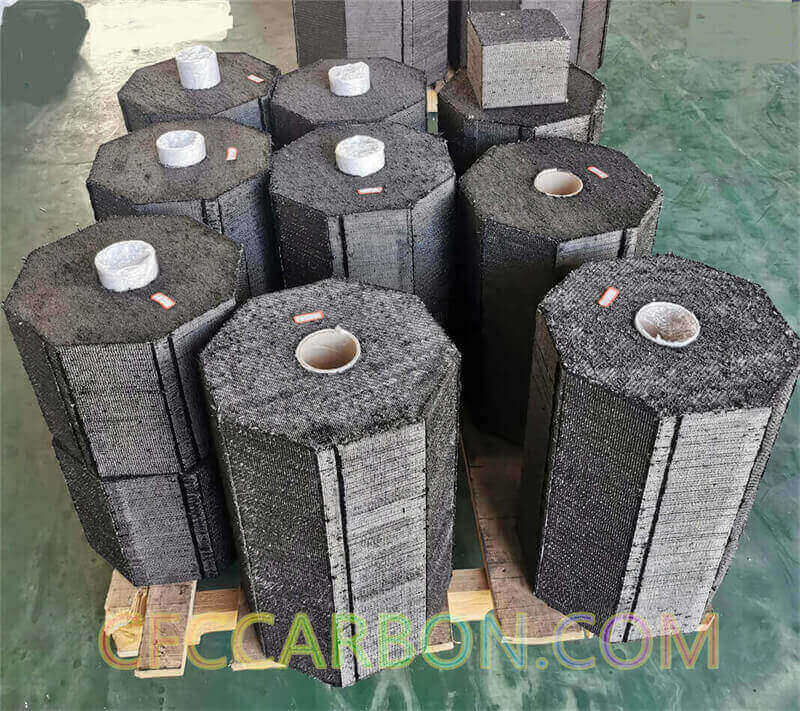To design a CC composite is to predetermine its woven preform configuration, target density, and degree of stabilization. Matrix morphology

3D 4D CFC carbon fiber composite preform-preforming-Prefab (3)
(pore structure and degree of process-induced cracking) can also be part of the material design. Density, degree of stabilization, and matrix morphology are determined by selection of the matrix precursor in combination with thermal processing; thus, manufacturing methodology is an important factor in the design of the composite. The most fundamental aspect of CC design, the element which typically is considered first, is the woven preform. Substructure or preform, to a greater extent than any other design consideration, delineates the properties of a CC composite. For continuous fiber-reinforced CC composites, substructure or preform design is referred to as fiber architecture.
Fiber architectures include filament wound patterns, yarn diameters, and spacing in unidirectional tapes, rods, and cylinders, patterns in woven fabrics, stacking patterns of laminates, braid patterns, and multidirectional patterns woven into preform constructions. Multidirectional woven preforms may have an orthogonal three-directional (3D) fiber architecture, more complex n-D architectures where n>3, or a cylindrical architecture having reinforcing fibers in the axial, radial, and circumferential directions. The majority of CC composite applications have typically required continuous fiber reinforcements.
Contact Us
related news /articles:
Structural Geometry of CC composite 2D fabrics (1)—Woven fabrics
Introduction of manufacturing and design of carbon-carbon composites
Data sheet of 3D carbon carbon composite | C/C composite material
CC composites as recuperator materials (2)-Background and development